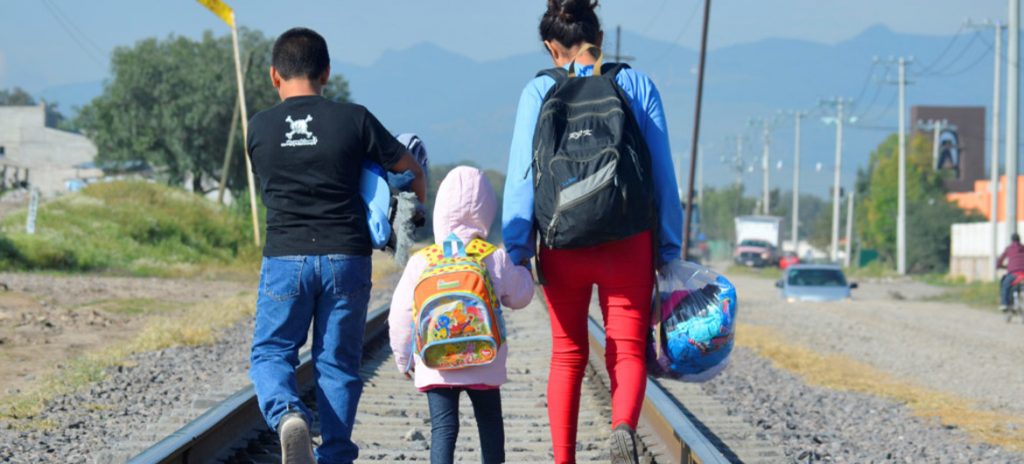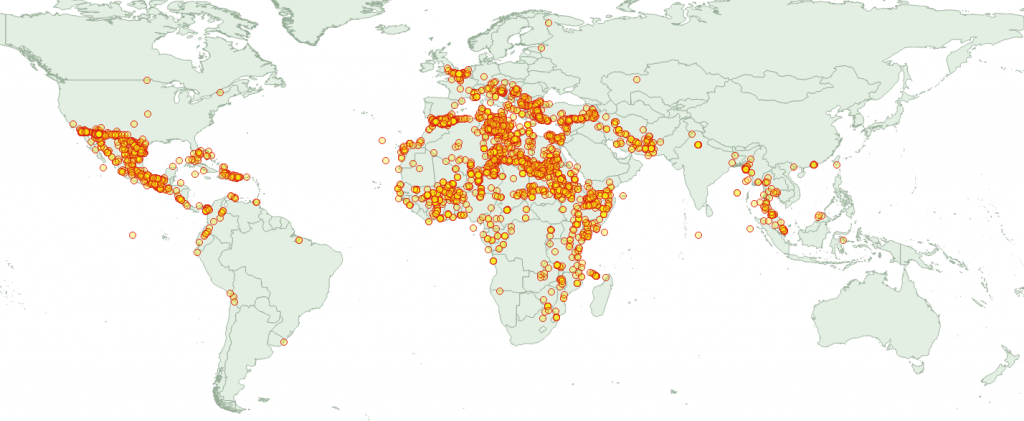
An analysis published by FAO at mid September 20191 lists dry weather and protracted conflicts as the main factors behind the external food assistance required by 41 countries. 31 among them are situated in Africa, mostly north of the Equator, and many contribute to a major flux of climatic and economic migrants and refugees, who often risk their lives for a better future.
A second set of reports2 issued by the UN Department of Economic and Social Affairs (UNDESA) focuses on migrants and refugees. Their number has now reached 272 million3 , which represents 3.5% of the global population: 82 million in Europe, 59 million in Northern America (59 million) and 49 million in and Northern Africa and Western Asia. The majority are “economic migrants” in search for better lives (better jobs and incomes) but a growing share is driven by unfavorable climate and insecurity, as stressed by FAO and already mentioned above.
Out-migration is the last resort option for people who cannot continue making a living at home4. According to the global CropWatch Bulletin issued by the Chinese Academy of Sciences5 the Central American “dry corridor” has been experiencing drought for the last five seasons […] In early August 2019 more than 1.4 million people were in need of urgent assistance in Guatemala, Honduras, El Salvador and Nicaragua, with a total of 2 million affected. The report further mentions World Food Programme sources according to which 25% of households in the region have insufficient income to cover their basic food needs and 8% indicated that migration was their only hope. Climatic refugees join economic refugees, especially those leaving Venezuela.
According to UNDESA (the UN Department of Economic and Social Affairs) the global number of refugees and asylum seekers increased by about 13 million between 2010 and 2017 and account for about 25% of the increase in the number of all international migrants. Northern Africa and Western Asia host around half of the refugees and asylum seekers, followed by about one quarter in sub-Saharan Africa. The number of migrants grows faster than the world population.
According to UN News6/3 and the International Organization for Migration (IOM), migrants are very vulnerable and exposed to many risks: at least 514 people have died on the migratory routes of the American continent during the first half of 2019, a figure more than 30% above that registered during the same period of the previous year, when 384 deaths were recorded. About half of the deaths occurred on the border between the United States and Mexico, while the rest were reported further south, in Central America (80 deaths), near from the Caribbean islands (151 deaths) or in South America (30 deaths).
ReliefWeb reports that IOM7 is deploying vast efforts to ensure that people who migrate are properly informed and pass borders legally. This applies to Mexico and the three countries of the “Northern Triangle” (Honduras, Guatemala and El Salvador).

The second pole of migrants is in Africa9/10/11/12.
According to IOM’s Missing Migrants Project 7,400 men, women and children have died in transit across Africa since 2014. Hundreds of additional deaths likely remain unreported and new areas of insecurity (for instance in Burkina Faso, [7]13) are developing and leading to increasing numbers of internally and internationally displaced persons.
About 4400 died while crossing North Africa, especially war-torn Libya, and attempting to cross the Mediterranean into southern Europe. The Mediterranean continues to account for the vast majority of deaths recorded globally, according to IOM. In 2018 arrivals in Greece, Italy and Spain totaled 112,000 and deaths reached 2,200. At the beginning of October 2019, IOM reported that the number of casualties had reached 1,000 deaths in the current year. Since 2014, nearly 14,500 deaths in total have been recorded across the region. In 2017, deaths in North Africa were mainly due to Sickness (38%), vehicle accidents (20%), Violence (13%), drowning (13%), starvation (7%) and exposure (heat stroke, dehydration, hyperthermia and hypothermia; 6%)
- 201909 – . Crop Prospects and Food situation, Global quarterly report. Link and download page.[↩]
- 2019 various dates – UNDESA World population prospects. Highlights, Download Highlights document, Download Key Findings document. [↩]
- 20190917 – The number of international migrants reaches 272 million, continuing an upward trend in all world regions, says UN. Source. [↩][↩]
- 20190816 – Más de 500 personas han muerto en las rutas migratorias de América este año. Source.[↩]
- 20191130 – CropWatch bulletin, quarterly report on global crop production, . chapter 5, page 203. Download link. [↩]
- 2017 – Fatal Journeys Volume 3 Part 1: Improving Data on Missing Migrants. Source and download link. [↩]
- 20190827 – IOM Launches Five Campaigns to Prevent Irregular Migration in Mexico and Central America. Source.[↩]
- Regularly updated – IOM Missing Migrants database. Download.[↩]
- 20181218 – Mediterranean Migrant Arrivals Reach 111,558 in 2018; Deaths Reach 2,217. Source. [↩]
- 20191021 – Burkina Faso’s unprecedented humanitarian crisis calls for stronger international support. Source.[↩]
- [20191009 – Over 7,400 Deaths on Migration Routes Across Africa in Last Five Years, IOM Figures Show. Source.[↩]
- [20191001 – IOM Warns About 1,000 Deaths on Mediterranean. Source. [↩]
- 20191021 – Burkina Faso’s unprecedented humanitarian crisis calls for stronger international support. Source. [↩]